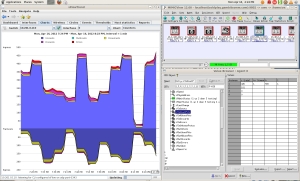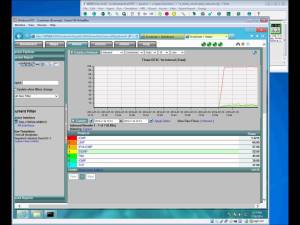SNMP is known as a computer network protocol and stands for “Simple Network Management Protocol”. This protocol is a means of communication to systems, switches, routers and other different network tools running SNMP agents, use to transmit crucial info regarding their status, happening over the network, and whatever else issues that are occurring. Usually, these SNMP agents are listening on a couple of UDP ports, that is 161 for general SNMP queries, and 162 for SNMP traps. When a system transmits an SNMP message in the structure of a trap, it does not matter which port it sends it out on, since the inaccessible listener is generally often listening on port 162, it should always send to 162.
 SNMP traps are an important part of a whole network management solution. The traps make use of a push mode of contact, i.e. they send information to a network manager without it asking for it, in the form of an SNMP message known as a Trap. This information then is utilized by the administrator to figure out possible events happening in the network, which can affect the network status.
SNMP traps are an important part of a whole network management solution. The traps make use of a push mode of contact, i.e. they send information to a network manager without it asking for it, in the form of an SNMP message known as a Trap. This information then is utilized by the administrator to figure out possible events happening in the network, which can affect the network status.
Fault management mainly consists of these traps, and due to that, it’s a reactive kind of technology. At the same time, performance management consists of polling monitoring, in which a polling process communicates a list of devices on port 161, and asks their agents for information related to their configuration and collects their statistics that the administrator needs. Both of these managements have their benefits and drawbacks, but what we wish to discuss about more here is the SNMP protocol and how it links to these trap messages.
 The trap message has many diverse components. Here we’ll talk about the SNMP version 1 trap. The simplest means to review these components is to make use of a protocol analyzer, and detain these SNMP messages on the wire. Once collected, the observer can notice that the PDU (protocol data unit) is broken into many parts, including the enterprise, agent address, general and precise trap values, a time stamp, and a list of unpredictable bindings.
The trap message has many diverse components. Here we’ll talk about the SNMP version 1 trap. The simplest means to review these components is to make use of a protocol analyzer, and detain these SNMP messages on the wire. Once collected, the observer can notice that the PDU (protocol data unit) is broken into many parts, including the enterprise, agent address, general and precise trap values, a time stamp, and a list of unpredictable bindings.
Gambit Communications is a provider of tools for simulating servers, networking and storage devices. Many leading enterprises and networking vendors around the world are using our MIMIC Simulator Suite for testing, development, operator training and disaster simulations. Now you can easily test SNMP based applications and verify your Cloud infrastructure by using our MIMIC Simulator Suite. It can generate large trap storms whenever needed, very easily.






0 comments:
Post a Comment